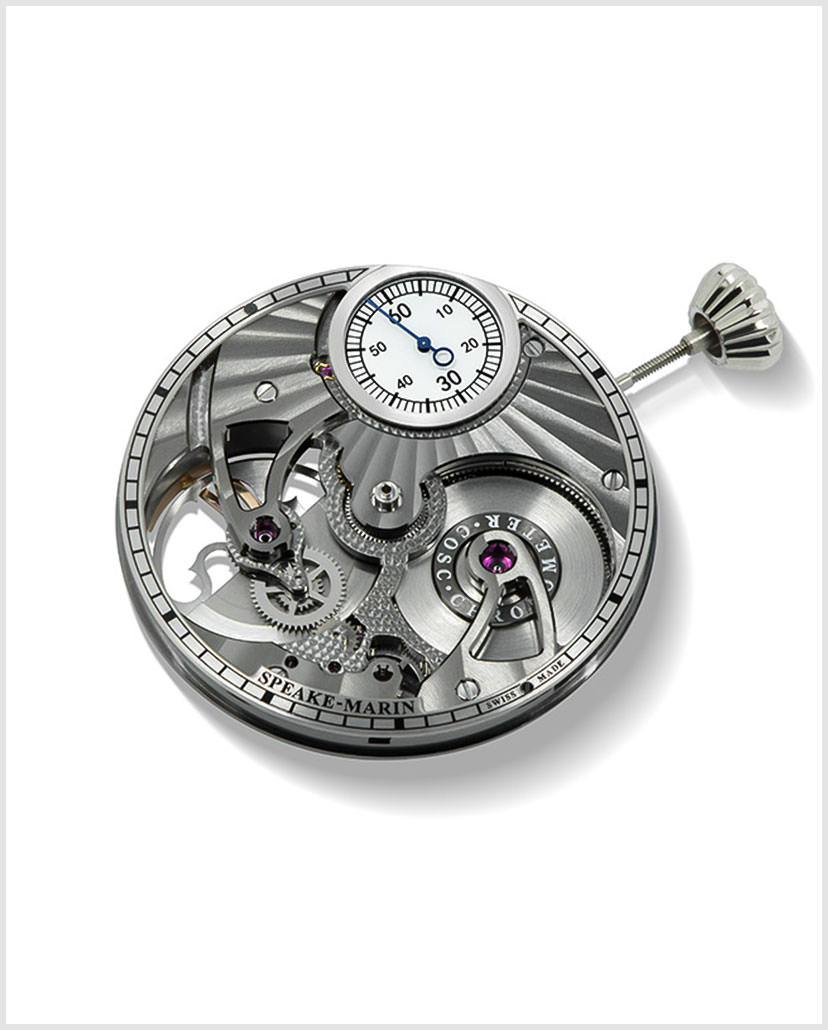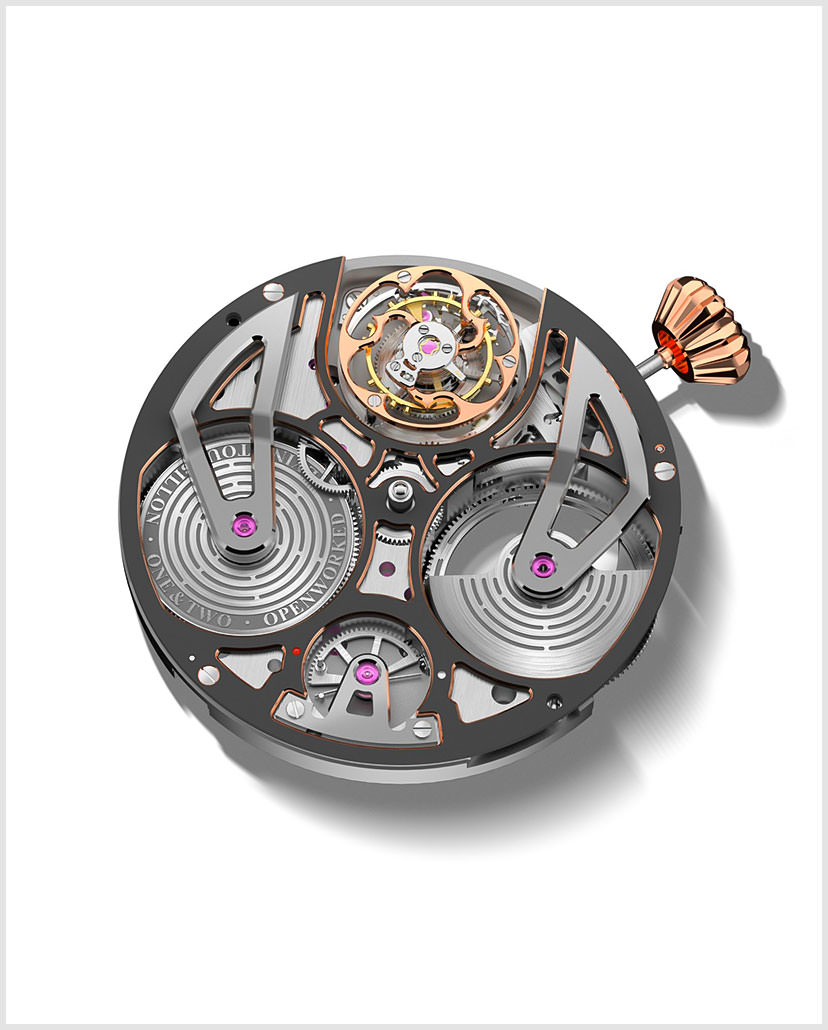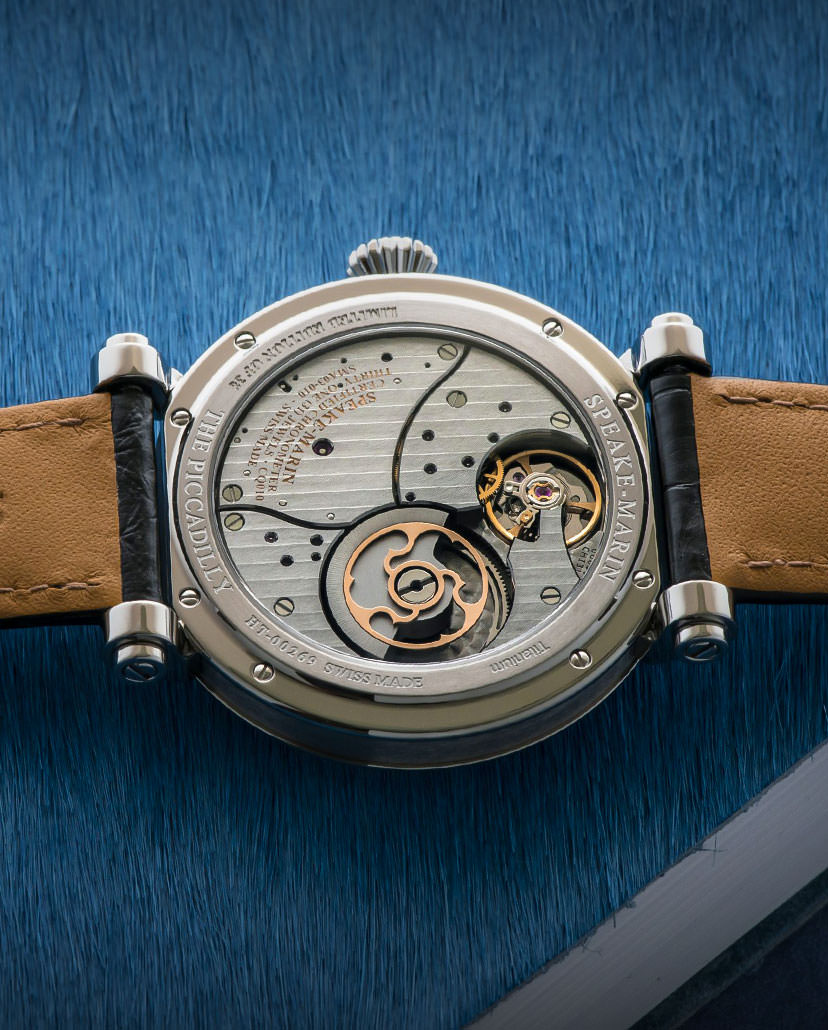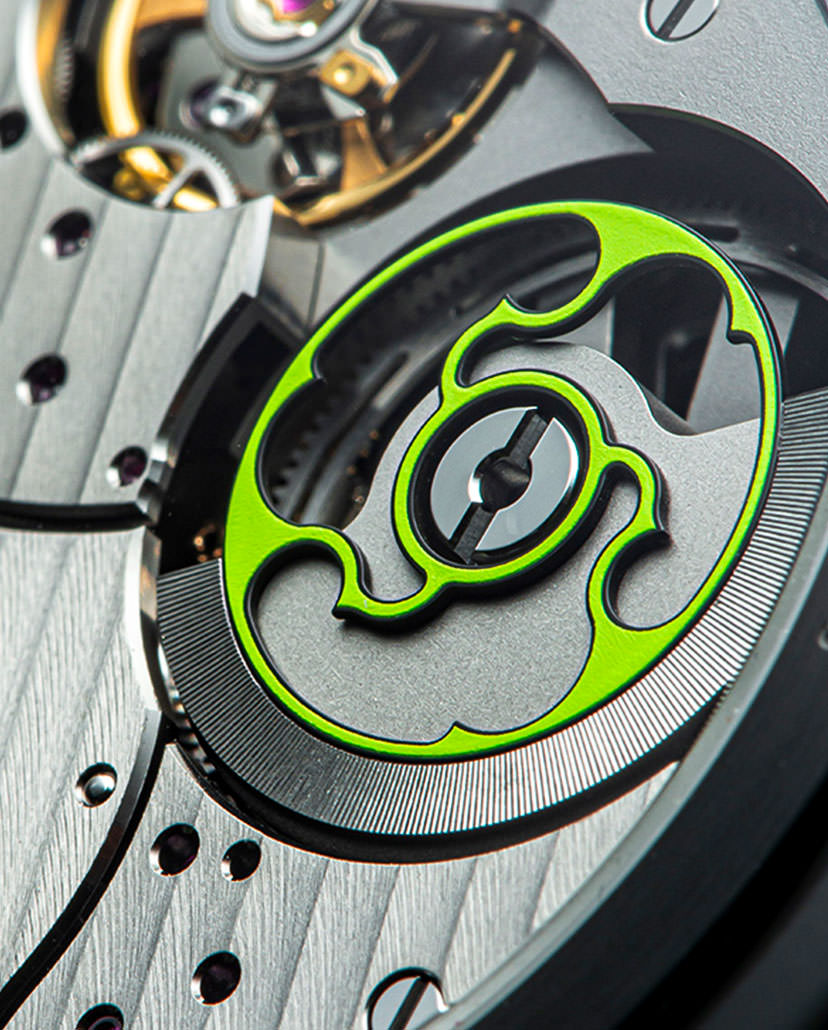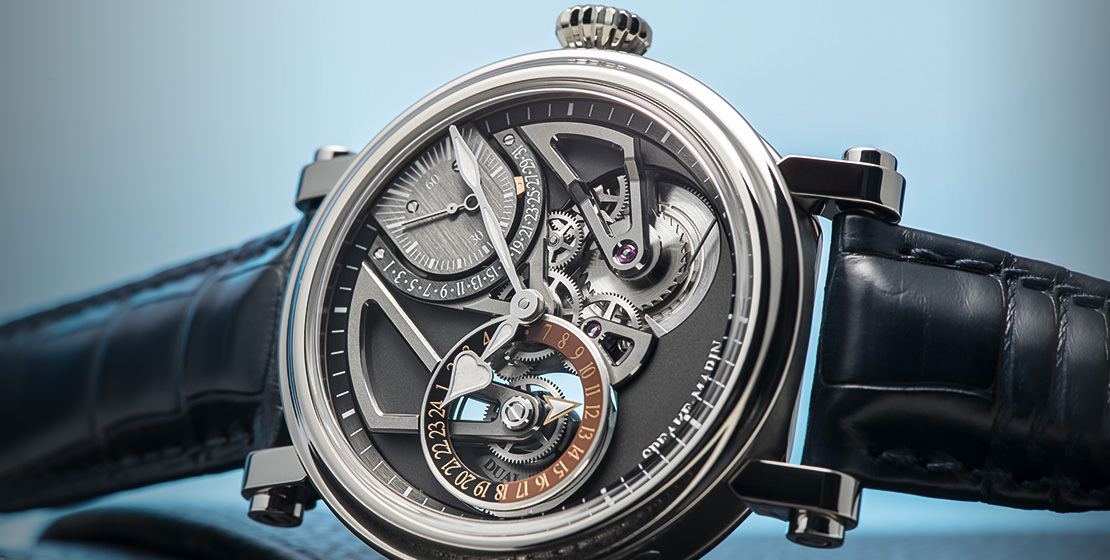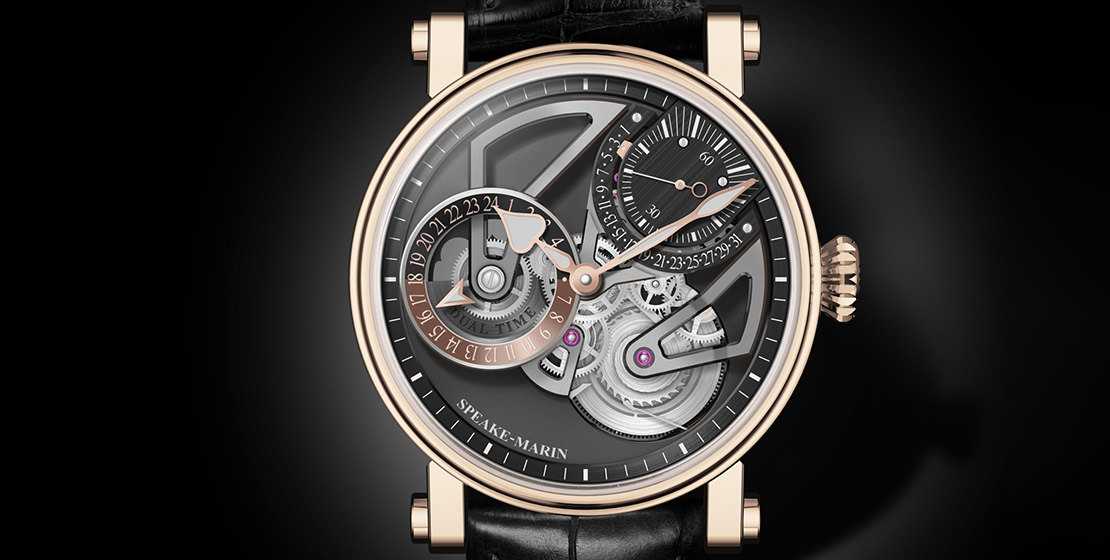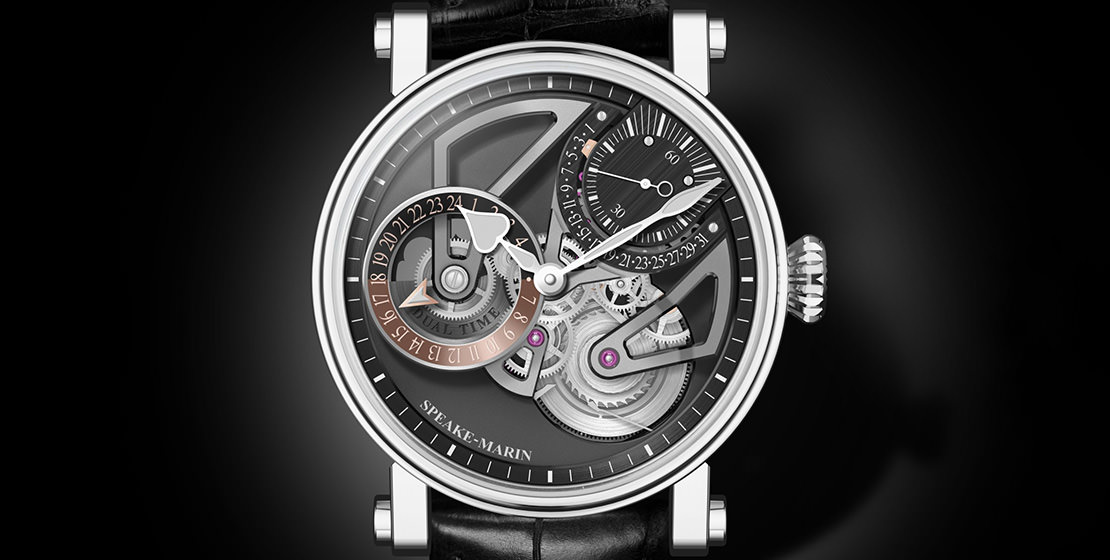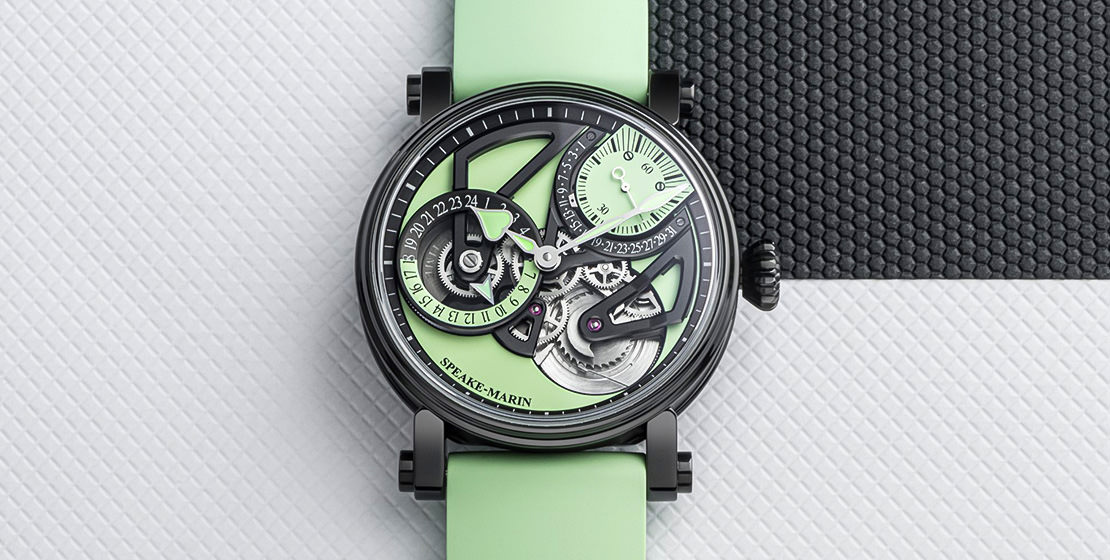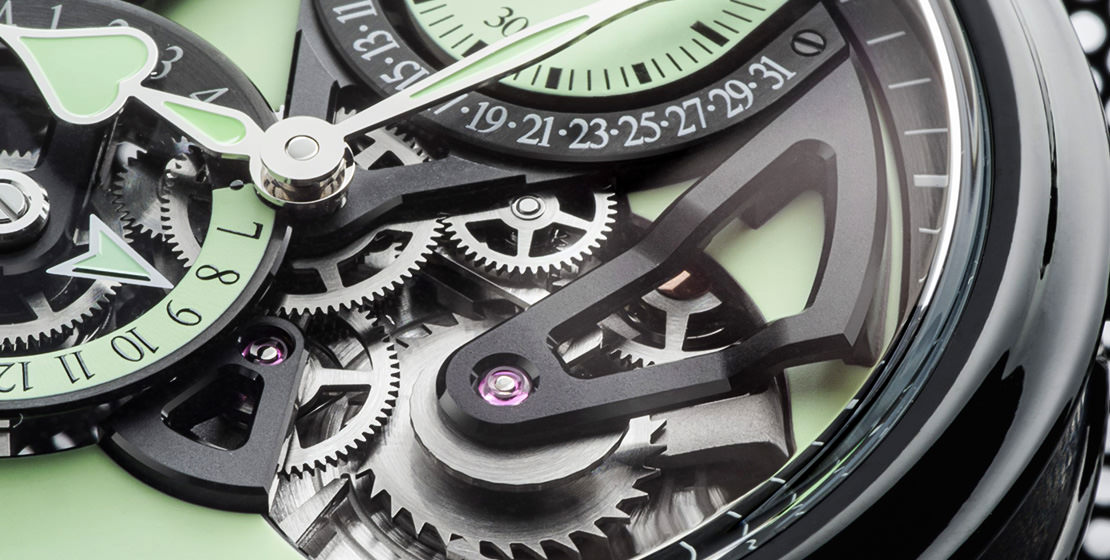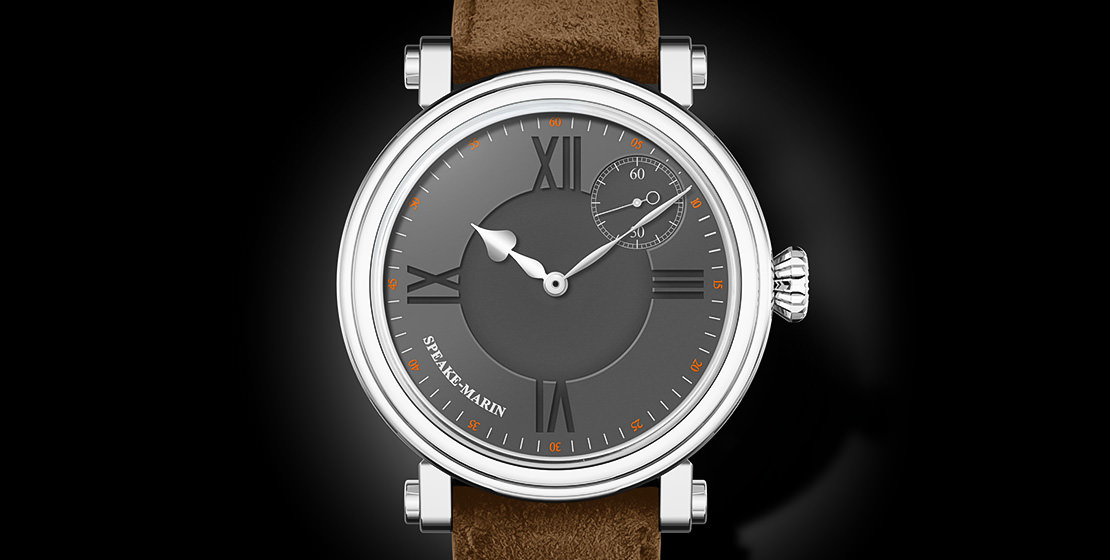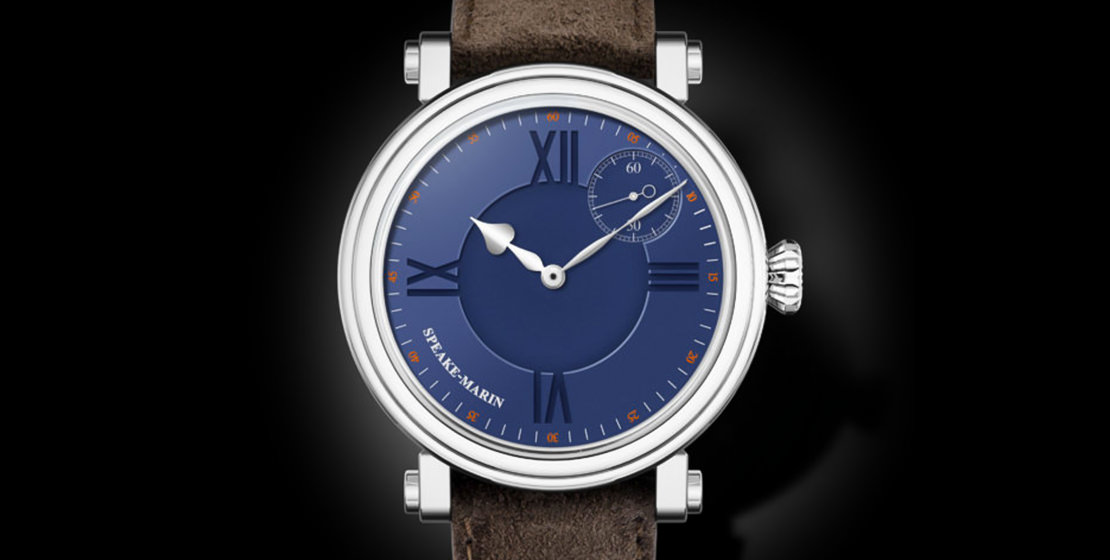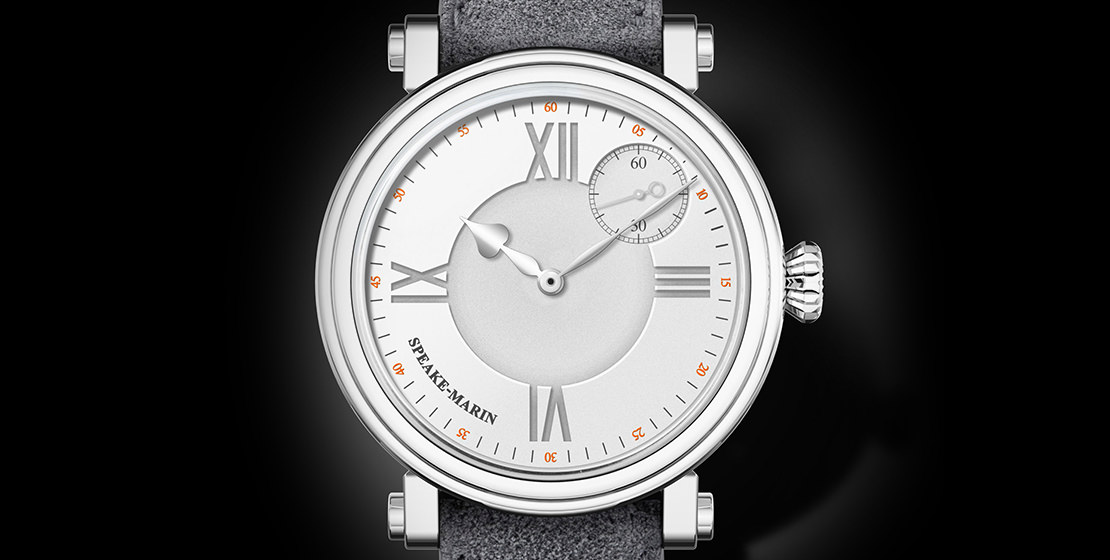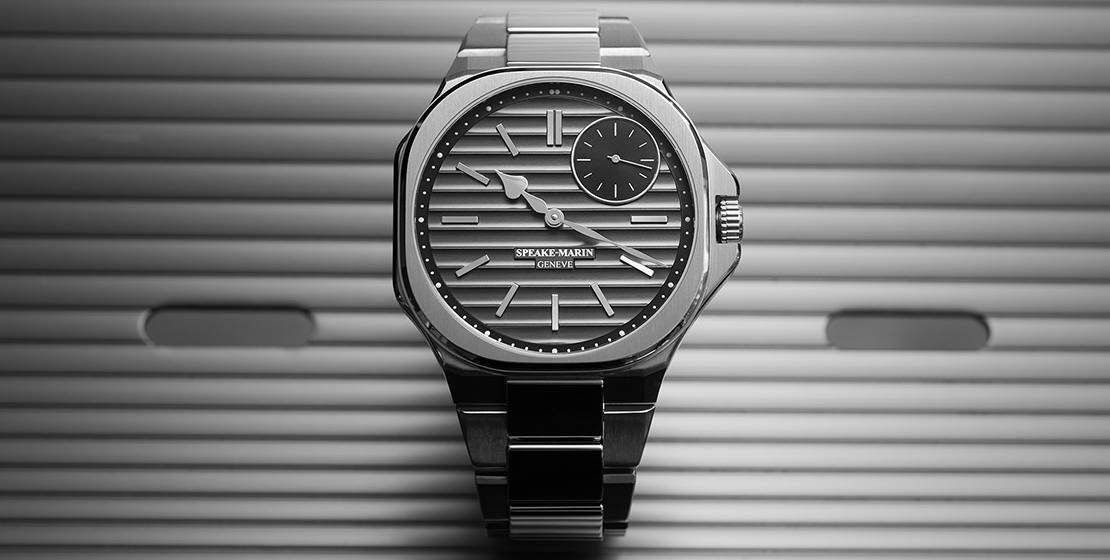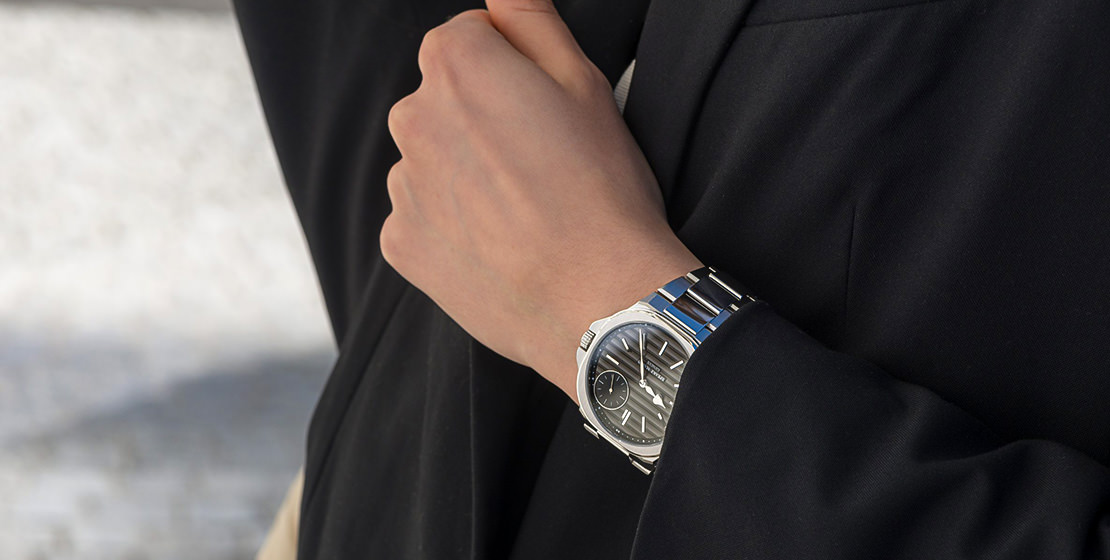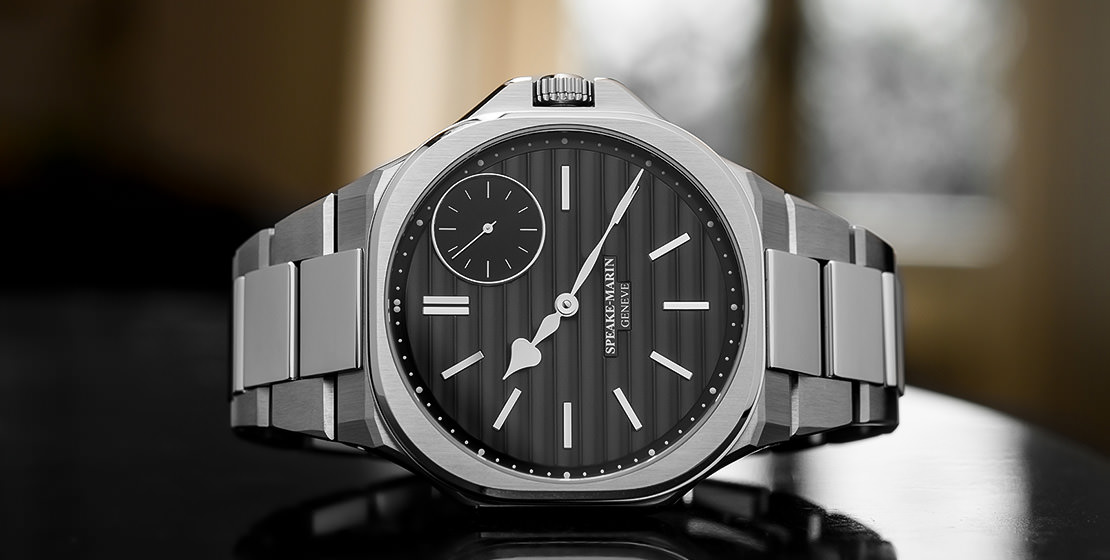Round-UpIntroducing Speake-Marin And Their ‘Belle Horlogerie’
Young, independent Swiss watchmakers Speake-Marin create their noted ‘belle horlogerie’ (‘beautiful timepieces’) with SMA calibres, partial skeletonised and multi-level dials, sub-dials, tourbillons, from scratch. Here’s all you need to know about the brand, along with a look at some of their definitive offerings
May We Recommend
In the world of Swiss watchmaking, the industry remains dominated by luxury conglomerates, barring the trinity of the most dominant market players—Audemars Piguet, Patek Philippe and Rolex—who are 100-percent independent. Others are independent but heavily source movements from ETA, Valjoux and Sellita. In the recent times, young, independent watch brands such as the Geneva-based Speake-Marin, have impressed the industry and aficionados for creating their own watches from scratch at their company-operated ateliers. Speake-Marin’s belle horlogerie (‘beautiful timepieces’) are built with partial skeletonised and/or multi-level dials, date and calendar displays, as well as prestige complications, including minute repeaters, tourbillons, and more.
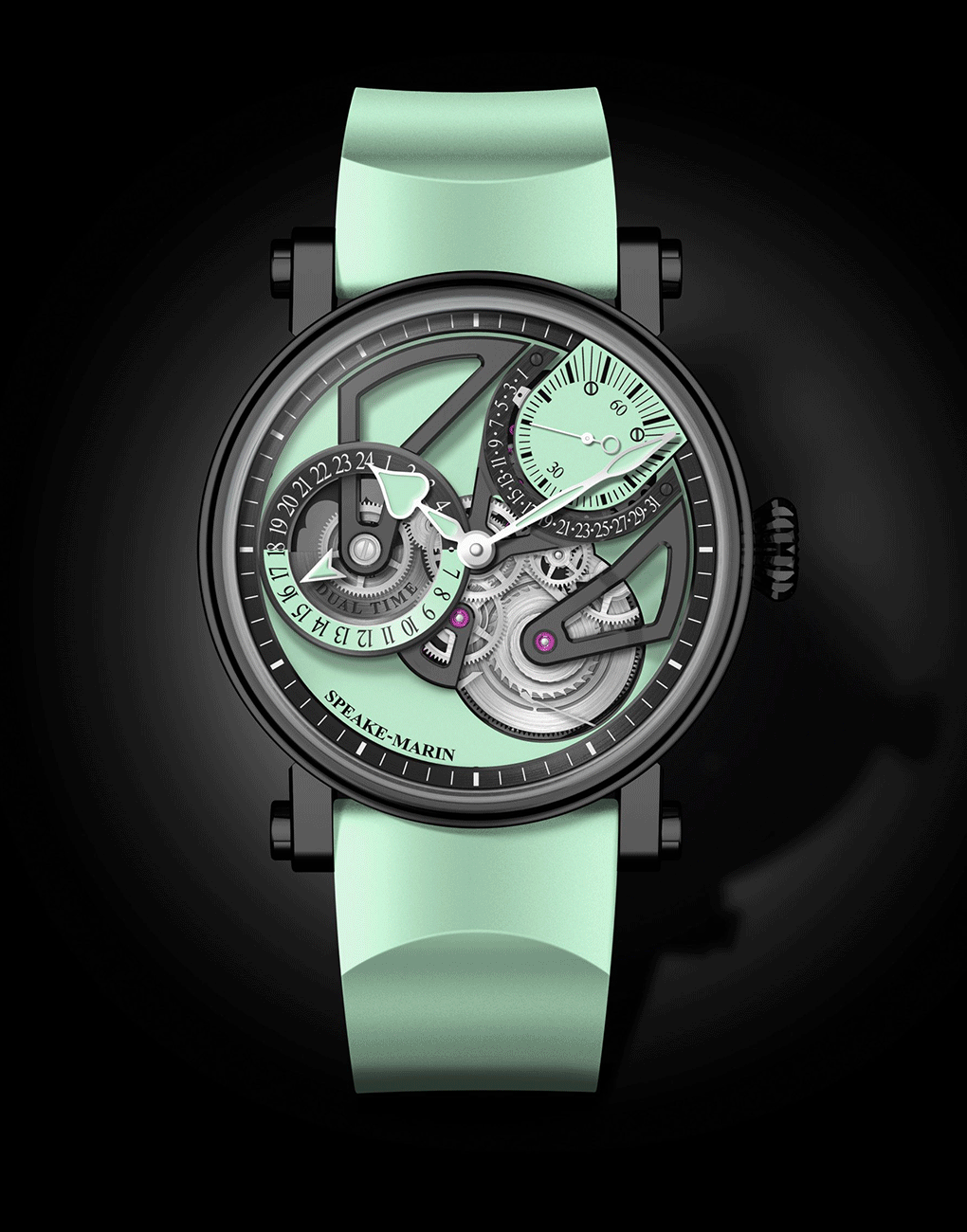
Founded by English watchmaker Peter Speake-Marin in 2002, the Swiss brand continue to run under his name, even after he left the company in 2017. At their atelier in Neuchâtel—after it was moved from Bursins, also in Switzerland—the company manufacture their own signature watch parts, movements, and technology. They generally prefer to work quietly, shying away from overt publicity. However, they did partner with actor Pierce Brosnan, who discovered the brand while being trained by Speake-Marin for his role as a watchmaker in his film The Survivor (2015). Interestingly, he also became the brand’s ambassador thereafter, for four consecutive years.
The Beginning: An Englishman On Swiss Shores
All his life, Peter Speake-Marin has oscillated between London and Switzerland, blending the best of both worlds in his designer timepieces. The master watchmaker, born Peter Neville Speake, in 1968 in England’s Essex, completed a watchmaking degree in 1985 from Hackney Technical College in London. Then he headed to WOSTEP school in Neuchâtel, Switzerland, to study horological complications. On completing the course, Speake-Marin returned to London and chose to become a restorer of antique watches—a vocation that several master watchmakers had opted for before they launched their independent brands. For seven years, he headed the department of antique watch restoration at Somlo Antiques, London. In 1996, he went back to Switzerland to innovate and build high-end complications for reputed maisons.
Speake-Marin’s Initial Belle Horlogerie
After two decades of watchmaking experience, the Englishman launched his own eponymous brand, Speake-Marin SA, in Bursins, Switzerland, to produce belle horlogerie (‘beautiful watchmaking’ in French). Despite the location and mechanism being Swiss, the brand expressed an intention to stay true to their English roots with the very first model, unveiled in 2003—the Foundation Watch. This handmade tourbillon pocket watch is a nod to London. The classic spade hands resemble the ones on the dial of the Elizabeth Tower clock in London—more popularly known as ‘Big Ben’. Its drum-shaped case was named Piccadilly by Speake-Marin—later redesigned by Eric Giroud—to remember his formative watchmaking years at Somlo Antiques. Other stellar features, such as the pleated crown, screwed lugs, and topping-tool motif of a tourbillon cage, won Speake-Marin an entry into the Académie Horlogère des Créateurs Indépendants (AHCI).
Collaborating With Watchmakers Extraordinaire
For his young brand to earn the repute of decades-old industry giants and win the trust of watch connoisseurs, Speake-Marin took the sensible approach of turning to collaborations. He developed the Excenter Tourbillon with Harry Winston in 2006; the Chapter One watch for Maitres du Temps in 2007 with veteran watchmakers Christophe Claret and Roger Dubuis; and Chapter Two with Daniel Roth in 2009. Even before Speake-Marin left the watch world flummoxed by exiting the brand in 2017, the entrepreneurial Rosnoblet family—who took over—were already long-term investors in the brand.
Two years before she took over as Speake-Marin CEO and president, Christelle Rosnoblet invested in the brand’s own haute horlogerie workshop called le Cercle des Horlogers at La Chaux-de-Fonds. The independent brand wanted to function as a self-sustaining whole, instead of relying on outsourcing the creation of horological parts and instruments. Today, their Neuchâtel atelier produces COSC-certified movements, such as the calibres SMA01, SMA02, SMA03, SMA05 under SMA (Speake-Marin Atelier) series, and their related micro-rotors, closed and open-worked dials with myriad features, and several signature elements. Here are a few definitive timepieces from the brand, which best represent what they are about today.
One & Two Openworked V3
Created in titanium and rose gold, this line, pays homage to its predecessor, titled Openworked Hours Minutes Seconds. The partially skeletonised dial offers a sneak peek of the automatic SMA01 calibre. Instead of existing between six or nine o’clock, a small seconds sub-dial is sits in the middle of one and two o’clock. A decoration of Geneva stripes in a radiant formation extends from this sub-dial to cover the entire dial. The titanium Piccadilly case comes with an anti-reflective sapphire crystal on the front and back for clarity in viewing time. All versions are sized at 38mm and 42mm, and are water-resistant up to 30m, and come with a black alligator strap with a pin buckle.
One & Two Dual Time
Dual time, as a function, was initially developed in the 50s to assist pilots who had to keep tabs on their home time while crossing several time zones in one flight. In this model, the small seconds sub-dial between one and two o’clock has an additional ring of a retrograde calendar with a 31-day scale. The sub-dial positioned at nine o’clock shows a secondary time zone, in 24 hours. The date display is operational via a pusher on the case-band at seven o’clock. To use this dual-time feature of this watch, all you need to do is pull the crown to first position to set the local time zone and then to the second position to set the home time or reference time. The in-house SMA02 calibre offers a 52-hour power reserve. The Dual Time series comes in two distinctive interpretation. Like the earlier open-worked models, these versions, in titanium or rose gold, feature skeletonised dials that partially expose the movement. On display are the 3D, open-worked bridges that are more angular and form a unique ‘triangulation’ between the GMT and small seconds sub-dials, and the exposed barrel, with a wolf tooth ratchet wheel. Sized at 38mm and 42mm, all variations come with black leather straps.
Openworked Dual Time
Like the earlier open-worked models, these versions, in titanium or rose gold, feature skeletonised dials that partially expose the movement. On display are the 3D, open-worked bridges that are more angular and form a unique ‘triangulation’ between the GMT and small seconds sub-dials, and the exposed barrel, with a wolf tooth ratchet wheel. Sized at 38mm and 42mm, all variations come with black leather straps.
Dual Time Lime and Mint
The Dual Time series in hues of lime and mint targets the young at heart. The mood palette for Dual Time Lime is redolent of tropical forests and rejuvenating cocktails, while Dual Time Mint invokes outdoors and freedom. Both models sport elements of black architecture of the movement—complementing the external construction. In DLC-coated titanium, the black cases feature anti-reflective sapphire crystal for the glass and caseback. Referred to as the ‘Summer Edition’, these pieces come in 38mm and 42mm—limited to 10 and 18 pieces, per size, per hue.
One & Two Academic
The minimalistic Academic line was launched on the heels of founder Peter Speake-Marin’s exit from the company, as a move to help restore faith in patrons and connoisseurs about the company’s future. Each model comes in a lightweight titanium case, in 38mm or 42mm, and slimmer than earlier models. The large, fluted crown gives a good grip to adjust the time. The line is available in limited editions of 16 pieces each of ‘metallic blue’ and ‘slate grey’ options, and 26 pieces of the ‘silvery white’ version.
Each version of the clean dial has a polished centre, a raised outer ring with a matt finish and four engraved hour markers in Roman numerals, as well as printed minute markers. The brand logo sits between six and nine o’clock, while the small seconds sub-dial is at the signature 1:30 position. The quintessential rhodium-plated ‘spade and whip’ hands come in silvery white, metallic blue or slate grey. On the reverse, the exhibition caseback allows you to view the ultra-slim calibre SMA03 measuring just 4.2mm! At 28,800 vibrations per hour, the micro-rotor helps store a power reserve of up to 50 hours.
Temptation Ripples
This model is a sole ranger in the Speake Marin oeuvre as a stainless steel watch, as well as a departure from the signature Piccadilly case seen in all other watches featured above. This 40.3mm version for men has an almost cushion-shaped case, water-resistant up to 50m. Called ‘La City’ (after London, not Los Angeles), this case comes with an unevenly-thick bezel.
The grey brushed dial sports a unique ‘ripple’ effect in horizontal stripes, which is where the watch gets its name from. A small seconds sub-dial in matt black at 1:30, presents striking contrast with its smooth surface. With baton indices on the dial and sub-dial, the display does include the ‘spade and whip’ hands even if it doesn’t come housed in the Piccadilly case of the One & Two watches. An integrated stainless steel bracelet with a double-folding clasp secures the timepiece firmly to your wrist. Housed within, the automatic calibre SMA03-T (T stands for Tradition) offers a power reserve of up to 52 hours. Only 100 pieces of this limited edition model is made per year.






